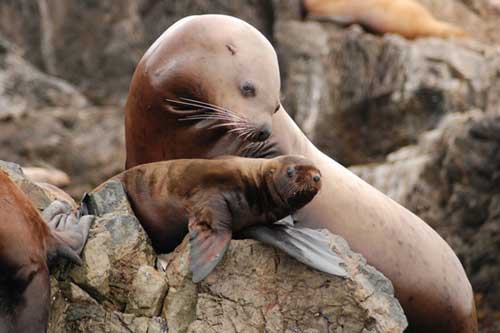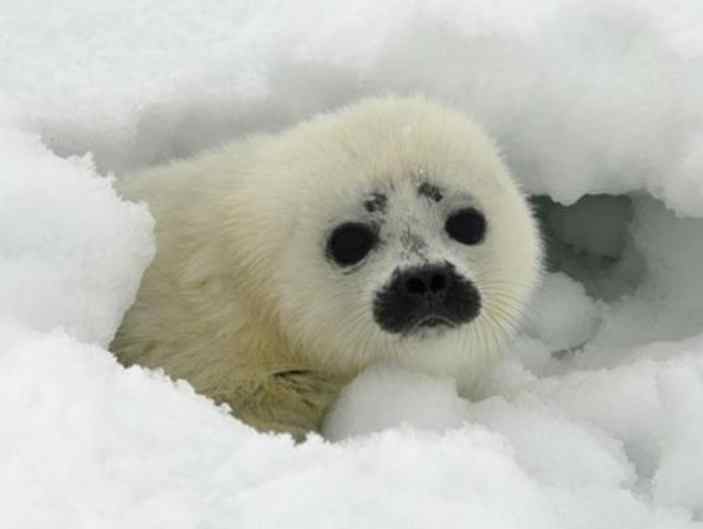
Steller sea lions were once abundant throughout the North Pacific, and Indigenous peoples and settlers used them for meat, hides, and oil. The Western distinct population segment is endangered, while the Eastern population has recovered and is no longer listed.
Steller sea lions are the largest of the “eared seals,” with males weighing up to 2,500 pounds. These marine mammals consume more than 100 different species of fish and cephalopods.
The places where they eat, rest, and have their pups often overlap with human activities, which can lead to conflicts, especially when humans feed sea lions. Factors such as climate change and reduced prey resources can cause sea lions to have a harder time finding natural prey and they may venture into harbors in search of food. When people deliberately feed sea lions or leave fish pieces or carcasses where sea lions can easily reach them, sea lions may choose to stick around. For their safety and yours, please do not feed Steller sea lions.









